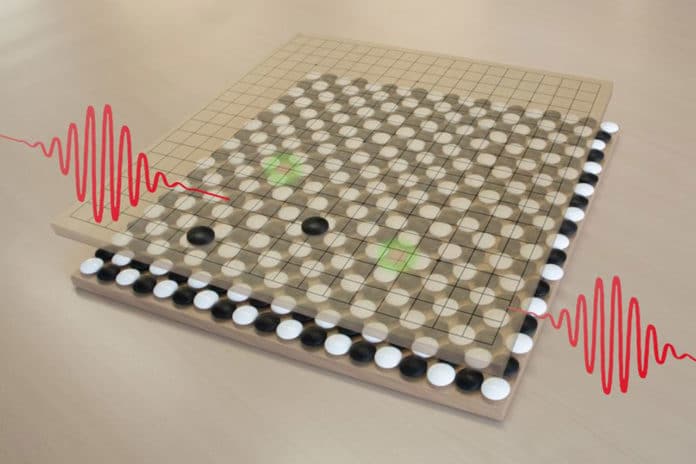Quasi particles describe a physical concept that treats elementary excitations in solids, like spin waves, as particles. As the particles do not consist of matter, they are called quasi-particles. Comprising many particles, the quasi-particles- which in many ways behave just like a particle themselves.
Scientists from the TU Wien (Vienna) now discovered this kind of quasiparticle in computer simulations. They dubbed it as pi-ton, a quasi-particle that contains two electrons and two holes.
Dr. Anna Kauch, the first author of the paper, said, “The name pi-ton comes from the fact that the two electrons and two holes are held together by charge density fluctuations or spin fluctuations that always reverse their character by 180 degrees from one lattice point of the crystal to the next—i.e., by an angle of pi, measured in radians.”
Prof. Karsten Held from the Institute for Solid State Physics at TU Wien said, “The simplest quasi-particle is a hole. Let us imagine, for example, that many atoms are arranged in a regular pattern in a crystal and that there is a moving electron at each atom. Only at one particular atom the electron is missing—this is called a hole.” Now an electron can move up from the neighboring atom. The original hole is closed; a new hole opens.”
“Instead of describing the motion of always moving electrons, it is easier to study the motion of the hole. If the electrons move to the right, the hole moves to the left—and this movement follows specific physical rules, just like the movement of an ordinary particle. However, unlike an electron, which can also be observed outside the crystal, the hole only exists in conjunction with the other particles. In this case, we speak of a ‘quasi-particle.'”
“However, the dividing line between particles and quasi-particles is not as clear as one might think. Strictly speaking, even ordinary particles can only be understood in the context of their environment. Even in a vacuum, particle-hole excitations constantly occur, albeit for a concise time. Without them, the mass of an electron, for example, would be completely different. In this sense, even in experiments with ordinary electrons, what we see is a quasi-particle electron.”
Not only this, there are multiple complex quasi-particles: The exciton, for example, which plays a vital role in semiconductor physics.
Scientists wanted to investigate such excitons. Thus, they developed computer simulations to calculate quantum physical effects in solids. But, soon, they realized that they came up with an entirely different in their calculations- a whole new kind of quasi-particle that consists of two electrons and two holes that couple to the outside world via photons.
Dr. Petra Pudleiner, also the first author of the study, said, “The pi-ton is created spontaneously by absorbing a photon. When it disappears, a photon is emitted again.”
Dr. Held said, “We have now investigated the phenomenon of the pi-ton using various models—it shows up again and again. Therefore, it should be detectable in a variety of different materials. Some experimental data obtained with the material samarium titanate already seem to point to the pi-ton. Additional experiments with photons and neutrons should soon provide clarity.”
The new particle is presented in the journal Physical Review Letters. The article also describes how pi-ton can be detected experimentally.
